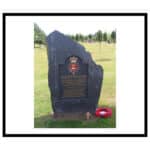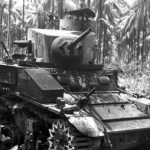The Great War
Within the context of the 1914-18 Great War, the part played by any one unit among hundreds must be obscured by the grand strategy.
The 3rd Hussars fought only in Northern France and Flanders, yet they gained twenty-five battle honours, double the amount they had won in the previous two centuries.
The regiment arrived in Rouen on 17 August 1914, and by 21 August was actively opposing the German cavalry at Mons.
Mons, 23-24 August 1914
The 3rd Hussars was involved in this opening stage of the Great War, as part of the 4th Cavalry Brigade, 1st Cavalry Division.
From 22-24 August the Cavalry was employed in sending out reconnaissance and screening patrols.
Later on the 24th, the Cavalry Division was ordered to attack the Germans who were pressing hard on the West flank of the 5th Infantry Division.
At 1230pm the whole Division was launched into the attack and held their positions against the German assaults, but as the French Armies were being pushed back on both sides they were forced to retire to avoid being completely cut off.
This led directly to the Retreat from Mons.
Retreat from Mons, 22 August – 5 September 1914
The Regiment, along with The 4th Queen’s Own Hussars, were both involved in this gruelling retreat south over hundreds of miles from Mons almost to the edges of Paris itself, a running battle all the way.
On 26 August the Army tried to make a stand at Le Cateau but they were hopelessly outnumbered and, suffering very heavy casualties were forced to continue their retreat to avoid total annihilation.
Many troops were split from the regiment and didn’t manage to rejoin them until the end of the retreat.
The Battle of The Marne, 7-10 September 1914
The 3rd Hussars, were part of the general advance that took place after the Germans suddenly found themselves over-extended because of their successes after Mons.
The Allied advance was so rapid that at one stage they could see a retreating German column in the distance but were too exhausted to try and catch it.
The 3rd Hussars crossed the River Marne at Chezy-Sur-Marne on the morning of 9 September. They were the advance guard of their Brigade and came across some enemy in the village. They dismounted and attacked the village, driving the Germans into the arms of the 5th Cavalry Brigade who had swung across the front of the enemy, taking a thousand prisoners.
The Battle of The Aisne, 12-15 September 1914
Having crossed the Marne the Allies pushed on into the Aisne Valley where the Germans had managed to prepare some very good defences on the North Bank.
The Cavalry were the vanguard of the advance and met the enemy’s rearguard at the bridges. The British managed to establish a bridgehead on the northern bank but the situation quickly became a stalemate.
This led directly to the ‘race to the sea’ with both sides trying to outflank the other and the Germans having their eyes set on the Channel Ports.
The First Battle of Ypres, 19 October – 22 November 1914

Resting near Ypres, November 1914. Copyright: © IWM. (Q57206)
The struggle for Flanders began in October at Ypres with the cavalry fighting as infantry holding the line at Messines under intense pressure. On one day the regiment lost fifty per cent in casualties.
The Allies had occupied a salient position around Ypres which sat on the main routes to the Channel Ports. The Germans launched a massive offensive in October 1914 to try and break through the line.
The regiment was first involved in the area when their Brigade captured the vital hill at Mont des Cats on 13 October.
They later were withdrawn to the Messines Ridge on 20 October where they dug in rapidly and were subjected to constant shelling until relieved on the 22nd.
The 3rd Hussars were then sent along with other regiments from their Brigade to patch up the line wherever it looked weakest, reinforcing at Wytchaete, Klein Zillebeke and Zandvoorde before being hurriedly sent back to Messines.
The Second Battle of Ypres, 22 April – 25 May 1915
After a long break over the winter of 1914-15, the regiment was involved in this second German attempt to crush the salient at Ypres. The opening assault on 22 April was preceded by the first-ever use of gas in warfare, which was to become a common feature in the Battle.
The regiment was brought into the line at Wieltje near St Julien on 23 April but it wasn’t until 2 May that they made their mark. The infantry to their front broke under a Chlorine gas attack and the 2nd Cavalry Division was ordered to advance to hold their positions, which they managed.
On 24 May they found themselves in a hellish position at Hooge in front of Bellewaerde Ridge, but fortunately, the expected assault never happened. The Germans abandoned their second attempt to crack Ypres.
The war now deployed into trench warfare with the regiment employed around Ypres, St Julien and Bellewaerde lake until put into reserve in June 1915. For the summer the cavalry spent much time digging trenches, waiting for “the gap” then put into winter quarters, emerging in March 1916.
Meanwhile, they provided large squadrons for a cavalry-dismounted division fighting as infantry in the trenches. September 1916 and the battle of the Somme saw the Regiment still providing labour behind the front, as well as their dismounted commitment before wintering in Villeroy.
The Battle of Cambrai, 20 November – 3 December 1917

A mass of British cavalry on the Cambrai Road, 26 May 1917. Copyright: © IWM. (Q (2210)
The regiment was involved in this massive attack on the German lines towards the end of 1917.
For the first time 400 tanks were used as the main thrust, backed up by 6 Infantry Divisions, 3 Cavalry Divisions and over 1000 guns, and on the first day, a salient 5 miles deep was forced in the German line.
The cavalry as usual was waiting for their chance to exploit any gap in the line, but there were not enough reserves to reinforce the bridgehead.
A strong German counterattack soon recovered all the ground they had lost.
At this stage, the 3rd Hussars were sent into the line as dismounted troops at Boulon Wood to stem the withdrawal.
The Second Battle of The Somme, 1918
The Second Battle of the Somme of 1918 was fought from late August to early September, in the basin of the River Somme. It was part of a series of successful counter-offensives in response to the German Spring Offensive, after a pause for redeployment and supply.
The most significant feature of the 1918 Somme battles was that with the first Battle of the Somme of 1918 having halted what had begun as a large German offensive, the second formed the central part of the Allies’ advance to the Armistice of 11 November.
The 3rd Hussars arrived in the early hours of the 22nd at Humbercourt, fourteen miles southwest of Arras. The battle had already begun. The 2nd Cavalry Division was ordered to support the 6th Corps in their drive beyond the Arras-Bapaume road. Three days later, when the 6th Corps was relieved, the brigade was withdrawn and split up, the 3rd Hussars remaining at Humbercourt until the 3rd of September.
During their ten days at Humbercourt, the regiment had to watch from the sidelines as the Allied offensive gathered momentum. The Germans were in retreat to the Hindenburg Line.
The Battles of The Hindenburg Line, 12 Sep – 9 Oct 1918
This series of battles involved the British, Americans, French and their Allies in a combined attempt to break the massive fortifications of the Hindenburg Line. With great tenacity, the Allies retook piece by piece all the land that they had lost over the last four years.
The 3rd Hussars ended the war where they had begun it in 1914, at Hautmont, having lost 107 killed and 385 wounded in the intervening four years.
In Remembrance
A nominal roll of the officers of the 3rd Hussars who died, along with a summary of the war diary entry/event, during The Great War 1914-18 is now available.
You can view this document here.
Battle Honours
The 3rd King’s Own Hussars were awarded a total of 25 battle honours during this period.
Why not discover the action behind each one:
- Mons
- Le Cateau
- Retreat from Mons
- Marne, 1914
- Aisne, 1914
- Messines, 1914
- Armentieres, 1914
- Ypres, 1914, 15
- Gheluvelt
- St.Julien
- Bellewaerde
- Arras, 1917
- Scarpe, 1917
- Cambrai, 1917, 18
- Somme, 1918
- St.Quentin
- Lys
- Hazebrouck
- Amiens
- Bapaume, 1918
- Hindenburg Line
- Canal du Nord
- Selle
- Sambre
- France and Flanders, 1914-18
The Great War 1914-18 Medals
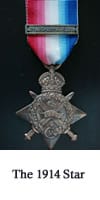
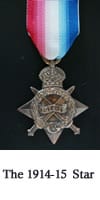
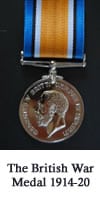
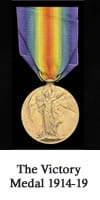
The 1914 Star was awarded to personnel who served in France and Belgium between 5 August and 22 November 1914.
1914-15 Star
The 1914-15 Star was awarded to personnel who saw service in any theatre of war between 5 August 1914 and 31 December 1915, other than those who had already qualified for the 1914 Star.
British War Medal 1914-20
The British War Medal 1914-20 was awarded to personnel in recognition of the successful conclusion of World War 1. It was later extended until 1920 to cover mine-clearing services and operations in North and South Russia, the eastern Baltic, Siberia, the Black Sea and Caspian.
The Victory Medal 1914-19 was awarded to all personnel who received the 1914 or the 1914-15 Stars. It is often referred to as the Allied War Medal.

